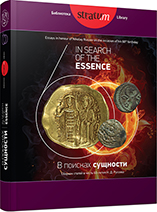Българският поведенчески стереотип — кимане с глава в знак на съгласие у гетите в Tristia на Овидий
The Bulgarian Behavioral Stereotype, Head Nodding Used by the Getae as a Sign of Consent in Ovid's Tristia
Author(s): Atanas Orachev
Subject(s): History, Anthropology, Customs / Folklore, Ancient World, Cultural Anthropology / Ethnology
Published by: Издательский дом Stratum, Университет «Высшая антропологическая школа»
Keywords: Ovid; Tristia; Getae; head nod; ethnic stereotype; Bulgarian behavioral stereotype; Thracian language; Sclaueni
Summary/Abstract: The tenth elegy in the Fifth Book of “Sorrows” (Tristia 5.10), which Ovid wrote in 12th year AD, was repeatedly commented on and translated for historical, ethnic and literary purposes. Particularly, for Tristia 5.10.41—42 it was noted that “the text seems to be dubious” and such translations were offered that did not reflect the essence of that elegiac observation by the Roman poet. In 1975, Friedrich Hauben perceived the meaning and made an ethnographic parallel to point out that only Bulgarians and Greeks had the opposite use of a pan-European gesture system with head nodding expressing consensus or negation. However, the «ethnic stereotype» described by Ovid is characteristic only for the Bulgarians in Europe, and when registering an approving head nod (top-down) or turning it left and right (as a sign of denial) in present Turkey, Macedonia and Albania, we must seek for the ancient substrate (the presence of similar substrates in India also requires further research). The Getaic head nodding as a consensus for now has no other explanation except for the fact that the Getae, like the other Thracian communities, had not “disappeared”, but what is more, made a significant contribution to the evolution of the Bulgarians as an ethnic group. Against the background of the available evidence and futility of the German thesis of Völkertode of the “ancient peoples”, however paradoxical it sounds, there is literally no need to prove that the Getae and the Dacians were the main part of those North Thracian peasant communities, which in the written documents from the end of the 6th century AD on began to be designated in Greek as Σκλάβήνοι or Σκλαύηνοι, while in Latin — Sclaueni, Sclavi, Sclauini.
Book: В поисках сущности
- Page Range: 44-53
- Page Count: 10
- Publication Year: 2019
- Language: Bulgarian
- Content File-PDF

